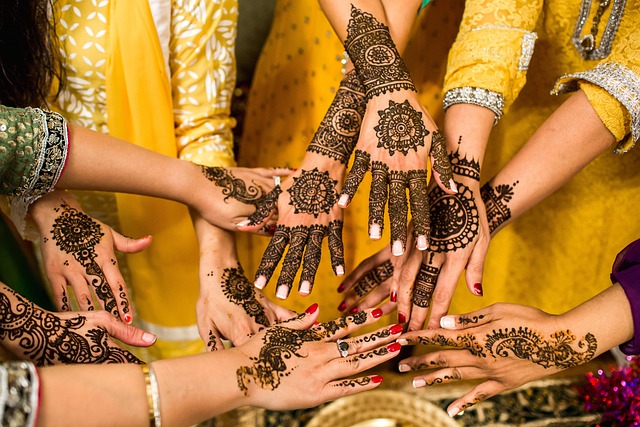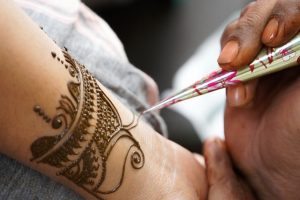 We recently received an email from a reader who marveled at the beauty of Henna tattoos. She’s right! They’re magnificent works of art! What are they and what do they mean?
We recently received an email from a reader who marveled at the beauty of Henna tattoos. She’s right! They’re magnificent works of art! What are they and what do they mean?
First of all, a henna tattoo is not really a tattoo as we know them. Instead of a design being permanently carved into the skin, henna tattoos are intricate designs that are drawn on the skin and fade away in about two weeks.
According to St. Thomas University, the art of henna – which is called mehndi in Hindi and Urdu – has been practiced in countries such as Pakistan, India, Africa and the Middle East for over 5,000 years.
The coloring comes from the henna tree (Lawsonia inermis), a tropical shrub of the loosestrife family whose leaves are the source of the reddish-brown dye. Although henna is used today to dye fabrics and for painting temporary body art, in ancient times it was used as a paste for the hands and feet because of its cooling qualities, or applied to the skin to treat stomach aches, burns, and wounds.
In modern day, we are most familiar with henna tattoos as the elaborate designs worn by Indian brides on their wedding day. In fact, the word “mehndi” is used interchangeably with marriage which is why a henna tattoo is a must in a Hindu marriages.
 As this article appearing in Medium explains, “The day before the wedding, the bride’s female friends and family get together to celebrate the bride’s last night of being single. There’s nothing strictly sacred or spiritual about it but it is always regarded as beautiful, lucky, and blessed. The bride and often the groom are highly adorned with henna designs with the process taking several hours and several artists to complete. A bride’s wedding designs usually include a hidden inscription of the groom’s name on her palm. The rich color henna stains the skin stands for the prosperity that a bride is expected to bring to her new family. The more deeply colored the designs turn out to be, the more it is considered that it is a good sign for the new couple.”
As this article appearing in Medium explains, “The day before the wedding, the bride’s female friends and family get together to celebrate the bride’s last night of being single. There’s nothing strictly sacred or spiritual about it but it is always regarded as beautiful, lucky, and blessed. The bride and often the groom are highly adorned with henna designs with the process taking several hours and several artists to complete. A bride’s wedding designs usually include a hidden inscription of the groom’s name on her palm. The rich color henna stains the skin stands for the prosperity that a bride is expected to bring to her new family. The more deeply colored the designs turn out to be, the more it is considered that it is a good sign for the new couple.”
Henna designs are not only used by brides. They can be used superstitiously such as designs made in the form of a hamsa hand or evil eye for protection,. Other designs are worn to be bring good fortune.
In some cultures, the designs have a deep religious meaning. As this article explains, “The use of Mehndi is described in the earliest Hindu Vedic ritual books. Staining oneself with Mehndi is intended to be a symbolic representation of the outer and the inner sun with Vedic customs centered on the idea of ‘awakening the inner light.’ Henna designs in India are often very complex, intricate and often involve geometric designs; however, traditional Indian designs are representations of the sun on the palm to follow these customs.”
In Morocco, henna designs are also used to celebrate the Islamic holiday Eid-al-Adha, in cycle of life and circumcision ceremonies, and by pregnant women to insure good health.
Not all designs are superstitious or religious, however. A henna tattoo can be in the form of anything from flowers and animals to all kinds of geometric shapes. Although some artists charge by the hour, these tattoos generally range in price from $20 to $200 depending upon the intricacy of the design.
If you’re really ambitious, you can purchase a henna tattoo kit for about $20 and do it yourself!
© All Rights Reserved, Living His Life Abundantly®/Women of Grace® http://www.womenofgrace.com









